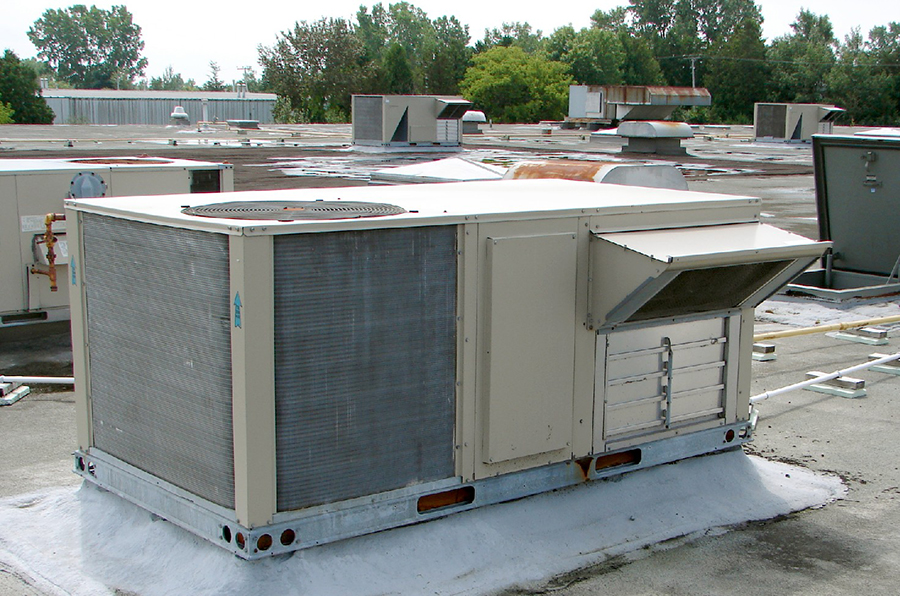Calculating AC size is crucial to keeping your home cool. Lucky for you, I’ve got three methods to help you nail that calculation!
The first method is quick and can be done by hand, while the other two need some special software because they’re a bit more complex. No sweat, though – I’ll guide you through each one and chat about their pros and cons.
Armed with this know-how, you’ll be ready to have an in-depth chat with HVAC pros. That way, you can dodge being oversold or stuck with a dud of a unit.

Important Note: An AC unit’s size is determined by how much heat is lost from a house, which depends on indoor and outdoor design temperatures.
Required variables for calculating AC size
At first glance, sizing an AC unit might seem simple. But in reality, there are loads of factors to think about. Many websites make it look easy-peasy, but the truth is, the more variables you consider, the more energy-efficient your unit will be.
Here are some things about your home to keep in mind:
- Square footage
- Ceiling heights
- Room layout and shape
- Number of floors
- Sun orientation
- Building materials
- Roof overhang distance
- Chimney count
- Ceiling fan usage and placement
- Wall and duct insulation type
- Air filtration and sealing
- Local climate
- Surrounding landscape
- Window and door specs
- HVAC equipment performance
It’s no shocker that lots of these variables are often ignored in AC calculations, even by supposed pros. That’s because the analysis gets super complex.
But leaning on a one-size-fits-all approach, assuming a fixed set of variables, isn’t always your best bet. Especially since many of these factors change over time.
Take smart landscaping, for example. Planting trees around your home means they’ll eventually grow and cast shade, cutting down on the solar heat your windows soak up. As a result, the AC unit you first sized for your home could end up being too big.

Important Note: Oversized AC units can cause a bunch of problems. One common issue is short cycling, when the unit switches on and off too often. This happens because the unit cools your house too fast, causing sudden temperature changes and other related problems.
Plus, an oversized AC unit will hike up your operating costs and shorten the unit’s life.
Method #1: AC sizing using square feet

This method just gives you a ballpark figure, but it’s actually pretty effective. A lot of contractors use this approach to size AC units because it’s so straightforward. And it works well for two reasons:
- Heat gain or loss is tied to the volume of air in a space.
- Heat gain or loss is tied to the surface area of walls in a space.
Before diving into the nitty-gritty of this calculation method, let’s go over a few home assumptions:
- Wall thickness is consistent in all rooms.
- Ceiling heights are uniform.
- Temperature differential is constant.
- Surface emissivity is constant.
- Thermal conductivity of walls is constant.
To use this method, just check out the table of values below. Remember, 1 ton is equal to 12,000 BTU/hour.
| Defined parameter | Equivalent BTU | |
|---|---|---|
| STEP #1: heat gain from living space | 1 square foot | 20 BTU |
| STEP #2: heat gain from people | Per person | 400 BTU |
| STEP #3: heat gain from cooking | Per kitchen | 1,500 BTU |
| STEP #4: ceiling height | Ceiling height over 8 feet | Multiply total BTU by 1.25 |
| STEP #5: exposure to sun | Home facing the sun | Multiply total BTU by 1.1 |
Let’s see this method in action with an example. Picture a family of four living in a 2,750-square-foot home with 12-foot ceilings, one kitchen, and sun-facing windows in sweltering Phoenix, Arizona.
Using the table above, we can figure out the right AC unit size for this home:
| Family example | Calculation | Total | |
|---|---|---|---|
| STEP #1: heat gain from living space | 2,750 square feet | 20 BTU per square foot | 55,000 BTU |
| STEP #2: heat gain from people | 4 people | 300 BTU per person | 1,200 BTU |
| STEP #3: heat gain from cooking | 1 | 1,200 BTU per kitchen | 1,200 BTU |
| STEP #4: ceiling height | 12 feet | 57,400 BTU x 1.25 | 71,750 BTU |
| STEP #5: exposure to sun | Yes | 71,750 BTU x 1.1 | 78,925 BTU |
| Total | 78,925 BTU or 6.6 Ton AC Unit |
Keep in mind that while this method is handy for sizing portable, window-mounted, or small ductless AC units, I wouldn’t recommend it for central air conditioning systems. There are just too many variables left out, which can result in an oversized unit that’s neither energy-efficient nor comfy. Not to mention the extra costs and bigger footprint that come with oversizing.

Important Note: For ductless air conditioners, you can also rely on Energy Star’s recommendations. They provide a list of AC unit sizes needed for various room sizes, along with any necessary adjustments.
Method #2: Sizing your AC using ‘Manual J’
Want to calculate the right size for your AC unit? There’s a tried-and-true method that contractors trust for big projects, and it’s even approved by ANSI. Created by the ACCA, this calculation method ensures consistent sizing practices across HVAC systems. After all, who wants everyone sizing AC units in their own funky way?
The beauty of this method is its scientific approach to sizing. By using best practices, you’ll get a way better estimate of the BTUs needed to cool your home.
But don’t expect to do this sizing method by hand – specialized software is the way to go. The program will account for all the sizing variables we initially talked about, and more.
Here’s a simplified breakdown of the program’s steps:
- Pick the desired temperature and humidity for each room or space.
- Calculate the temperature and humidity difference between the outside and inside of the given room or space.
- Determine the heating and cooling load using the ‘Manual J’ database and template.
If you’re keen to try this method yourself, HVAC load calculator is an awesome free online tool based on ‘Manual J’.

Important Note: Even though it’s effective, you can still oversize your AC unit with this method.
To dodge this, it’s a good idea to ask your AC technician to skip adding any extra safety factors beyond what’s already included in the software.
Another handy tip is to request the calculation sheet from your HVAC technician. That way, you can double-check all the inputs and assumptions made in the calculation to make sure your AC unit is sized just right.
Method #3: Sizing your AC using ‘Manual J’ and extra charts

Ready to level up your AC sizing game? Say hello to Method #3—a comprehensive approach that brings together a bunch of handy tools, including:
- ‘Manual J’
- Comfort chart
- Duct sizing chart
- Psychrometric chart
This method is perfect for large homes or commercial buildings over 9,000 square feet, where nailing the right size of central air conditioning unit is crucial. There’s just no wiggle room for mistakes at this scale.
To use this method, follow these steps:
- Use the comfort chart from the ‘American Society of Heating & Ventilating Engineers’ to pinpoint the comfort zone in your air-conditioned space.
- Employ the ‘Manual J’ method to calculate the heat gain in all rooms, considering both inside and outside design variables.
- Figure out the mass flow rate of air into each room, which is the ratio of fresh air to re-circulated air. From there, determine the right air conditioning unit size based on the cooling load value.
- Calculate the duct size in each room.

Important Note: Even with the best sizing method out there, a perfectly sized AC unit is never truly perfect. Why? Well, even if we calculate the ideal AC unit, it’s not guaranteed to operate within the optimal range.
Think about cars. A car might have maximum fuel efficiency at a constant speed of 60 miles per hour, but let’s be real—most people’s driving is all over the place, with tons of sudden stops and starts. And that’s the dilemma of trying to size the perfect AC unit.
Limitations with the AC calculation methods
Let’s be honest—none of the sizing methods are foolproof, even when done by experts. Even if you take into account every variable involved in calculating AC size, there’s always the chance that unexpected temperature spikes will mess things up.
As a California resident, I feel this pain. The temperature seems to be rising every year, with crazy spikes becoming more common even in odd months. So, what’s the solution? Do you design for these temperature anomalies we’re facing today? If you do, your AC unit will be way too big for the rest of the year when temperatures are normal. But if you don’t, you’ll roast during those few months when the temperature soars.
And to make things trickier, what if these extreme temperature cycles are here to stay? Do you try to predict the future and account for them now? After all, who wants to replace their pricey AC unit every five years? Not this guy!
And even if you do replace your AC unit, it’s not always straightforward. For example, let’s say you buy a new home and just check the AC nameplate to buy an identical replacement unit. The catch is, the existing AC unit size might have been wrong from the get-go.
Or, what if you’ve remodeled your home and added more windows and appliances? Suddenly, swapping out your existing AC unit isn’t so simple—you’ll need to run new calculations.
Lastly, it’s important to note that AC units are getting way more efficient these days. Companies are now selling SEER 20 systems, compared to the SEER 14 systems that were popular ten years ago. So, comparing an older unit to a newer one isn’t exactly an apples-to-apples comparison.

Important Note: SEER stands for Seasonal Energy Efficiency Ratio. The higher the SEER rating, the more efficiently an AC unit will run. For instance, a 20 SEER AC unit is twice as efficient as a 10 SEER AC unit. This means you can cut your energy bill for cooling in half.
“Calculating AC size” wrap up
Figuring out the size of your AC might seem like a monster of a task, but trust me, it’s not as mind-boggling as it appears. The real challenge lies in gathering all the necessary info for the calculations.
Thankfully, Method #1 is a piece of cake for sizing smaller AC units, and I’ve used it with great success time and again. But when it comes to the big guys, like central cooling systems, it’s best to leave it to the pros or at least grab some specialized software to guide you through the process.
It’s also crucial to understand the limitations of each method. If you’re banking only on square footage to determine the size of your central AC unit, you’re in for a shock.
And here’s the kicker! When it comes to big investments like central AC units, don’t just blindly trust generic sizing charts or an HVAC technician’s word. Be a smart shopper and ask them to show you exactly how they calculated the unit’s size. By doing this, you’ll stay cool and save cash.
What are your thoughts on calculating AC size? And what about the limitations of AC sizing?
